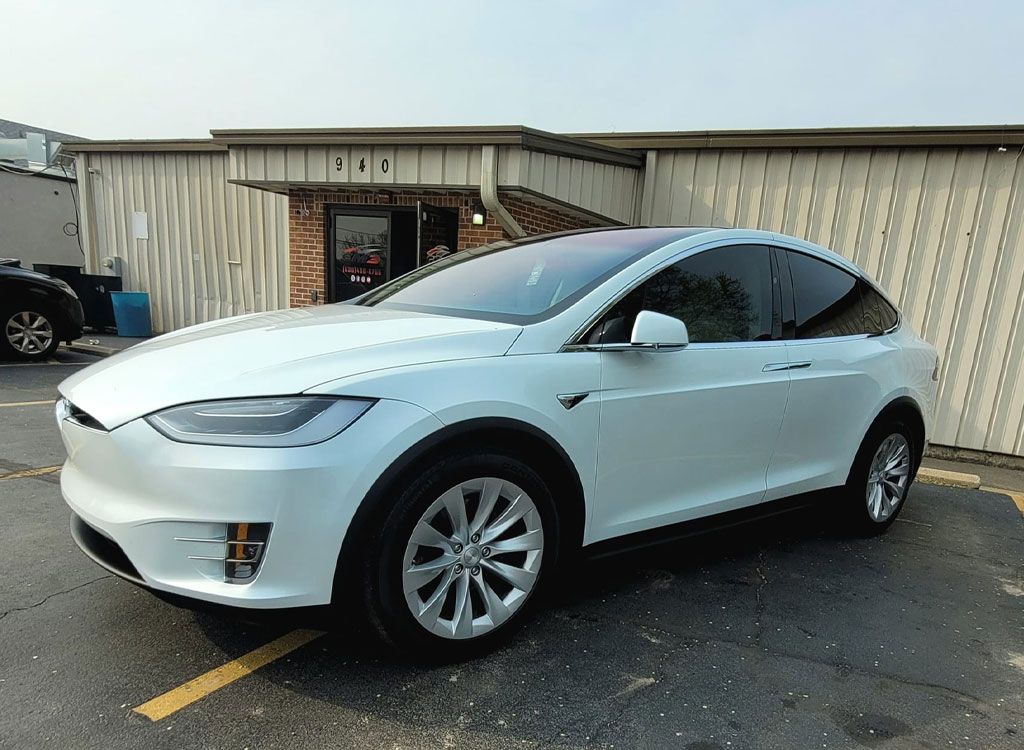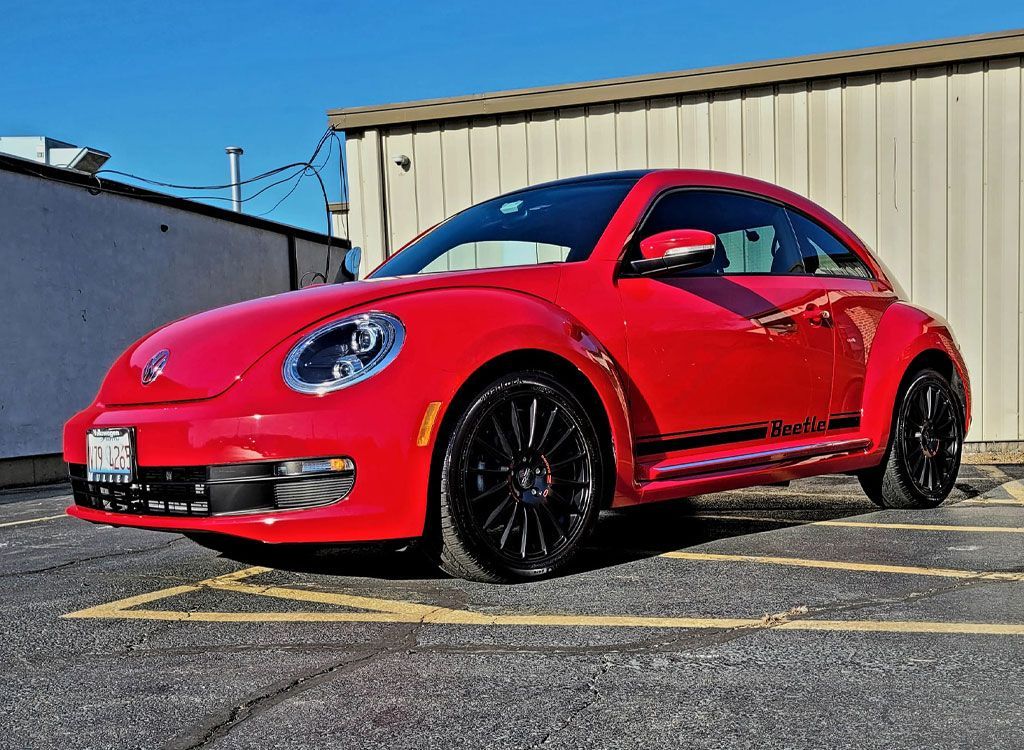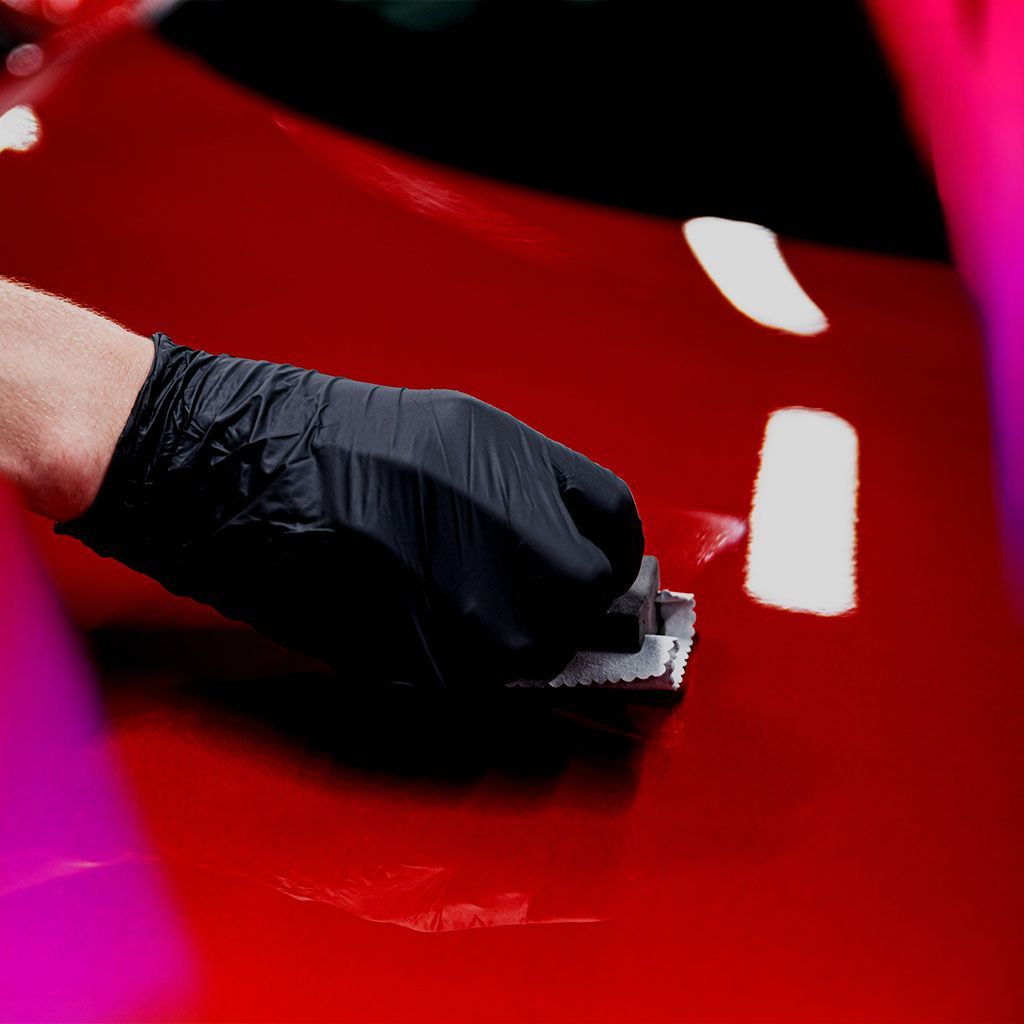Can PPF Be Used On All Car Models And Makes? Benefits And Considerations
When it comes to keeping your car looking fresh and new, many owners wonder if Paint Protection Film (PPF) is worth the investment. After all, vehicles are significant purchases that we want to protect from everyday wear and tear, whether it’s from pesky dirt, road debris, or accidental nicks from a shopping cart. PPF acts as a transparent shield that can safeguard nearly any car model, extending its shine and beauty for years to come. With its increasing popularity among car enthusiasts and everyday drivers alike, understanding how PPF works—and what it can do for your vehicle—is essential if you want to maintain that just-off-the-lot look. Let's dive in!
Yes, Paint Protection Film (PPF) can be used on a wide variety of car models and makes, including luxury cars, sports cars, SUVs, trucks, classic cars, and daily drivers. However, it's essential to choose the appropriate type of PPF—whether pre-cut for specific models or bulk for more customization—and consult with experienced automotive professionals for optimal installation results.
What is Paint Protection Film?
Paint Protection Film (PPF) is a remarkable transparent layer made from thermoplastic urethane, specifically designed to safeguard the exterior of your vehicle. It's like a shield for your car’s paintwork, standing strong against scratches, road debris, stone chips, and other environmental hazards that could threaten its pristine appearance. This film isn't just an ordinary covering; it serves a critical purpose in preserving the longevity and aesthetic appeal of your vehicle's finish.
Interestingly, PPF has an impressive origin story. Initially developed for military use to protect helicopter blades from wear and tear, this durable film gradually transitioned to consumer vehicles over the last few decades. As car owners recognized the value of protecting their investments, PPF gained popularity for its practicality and cost-effectiveness in maintaining a vehicle's showroom shine.
One primary advantage of PPF is its self-healing properties. Reputable brands are well-known manufacturers producing high-quality PPF that can literally "heal" minor scratches when exposed to heat. If you snag the edge of your car with a shopping cart or get a small scratch during regular use, the film can restore itself through warmth—leaving no visible trace behind. Imagine how comforting it is to know that your investment is not easily marred by life’s little mishaps!
Supporting this trend, recent market research indicates that the PPF market is projected to grow at a compound annual growth rate (CAGR) of 5.5% through 2028. This growth signals a rising interest among consumers looking for ways to maintain their vehicles’ value and appearance. Think of PPF as an invisible coat of armor for your car! Just like knights of old relied on their armor to defend them against foes, modern car owners depend on this fortifying film to guard against daily challenges on the road.
Moreover, this film can be applied across various surfaces—not just the hood or bumpers but also mirrors and entire vehicle wraps—providing comprehensive coverage tailored to your specific needs. Available in multiple finishes—from glossy to matte—PPF allows for personal customization while enhancing your vehicle's aesthetic appeal. This understanding of paint protection film underscores its significant implications for car owners who seek effective solutions tailored to their specific vehicle models and makes in order to maintain peak performance and appearance over time.
Car Models Suitable for PPF
- Luxury Cars: High-end vehicles such as those from Porsche, Mercedes-Benz, and Tesla are prime candidates for PPF. Luxury cars come with exquisite paint jobs that can be costly to repair. The application of PPF acts as a shield, ensuring that the vibrancy and gloss of their paint remain intact while resisting scratches and environmental damage. Imagine driving down a scenic route only to find gravel kicked up by another vehicle—PPF acts like an invisible barrier, preserving your car's beauty through such minor mishaps.
- Sports Cars: For sports cars like the Chevrolet Corvette and Lamborghini Huracan, utilizing PPF is nearly mandatory. Given their high performance and speed, these vehicles face a greater risk of road debris and chips at high velocities. A single small stone can ruin the pristine appearance of these sleek machines. Thus, applying PPF not only protects them from inevitable wear but also provides peace of mind for owners who love to drive their cars to their limits. It’s essentially a racing stripe for protection—keeping the aesthetic while preventing damage.
- Daily Drivers: What about everyday cars? Even popular models like the Honda Civic or Toyota Camry can benefit from a protective layer of PPF. These reliable daily drivers may not scream luxury or speed, but they represent a significant investment for many families. Protecting against mundane hazards such as shopping cart dings or careless door swings keeps these vehicles looking fresh over time and helps maintain resale value. Think about it: you might drive your Civic to the store countless times; why not ensure it remains in top-notch condition during those routine trips?
This versatility in application indicates that no matter if you drive a luxury vehicle, sports car, or everyday commuter, there's value in paint protection film for each model's longevity and aesthetics. Understanding the specific needs of your car will help you appreciate all that this film has to offer before exploring its numerous advantages.
Key Benefits of Paint Protection Film
One of the primary reasons car enthusiasts and everyday drivers alike choose PPF is its durability and longevity. With proper care, high-quality films, such as those offered by reputable brands, can last anywhere from 5 to 10 years. Some users have found that these premium films can outlast the vehicles themselves, ensuring that even after years of use, the paint job remains intact and visually appealing. This long-lasting protection often translates to significant cost savings over time since repairs or repainting can be costly.
Another standout feature of PPF is its remarkable self-healing capability. Imagine driving your prized sports car to an event only to find a few minor scratches when you park. Trusted brands have developed films that respond to heat by healing themselves; light scratches and swirl marks disappear when the film is exposed to warm temperatures. This innovative technology ensures that your vehicle maintains that showroom shine, eliminating the need for constant touch-ups or detailing.
Additionally, PPF provides crucial UV protection, acting as a shield against harmful sun rays. Over time, UV exposure can cause a vehicle's paint to fade significantly, leading to unsightly discoloration and potential depreciation in value. The beauty of PPF is its ability to block up to 99% of these detrimental rays—preserving both the integrity and appearance of the paint underneath.
Beyond protective qualities, PPF also enhances your vehicle's aesthetic appeal. Car owners seeking a particular look will appreciate that some PPF options come in various finishes, including glossy or matte surfaces. This customization allows you to maintain your vehicle's style without compromising on protection. For example, a glossy finish can give your car an extra sheen, while a matte finish provides a modern edge without sacrificing safety.
These compelling advantages collectively make PPF an invaluable investment for any conscientious car owner. By opting for thoughtful application, you're extending the life of your vehicle's paint while enhancing its overall appearance and market value—ensuring it stands out on the road for years to come. As we explore further, it's essential to understand how the application process works and which areas are best suited for coverage.
Application Process and Coverage Areas
Properly applying PPF demands attention to detail from start to finish, and each step plays an essential role in achieving that sleek, protective shield. The first, and perhaps most crucial, step involves cleaning the vehicle's exterior. You need to ensure that every speck of dirt and residue is removed. A spotless surface allows for optimal adhesion and prevents any imperfections under the film that could mar its appearance.
Once you’re satisfied with the cleanliness, it’s time for preparation. Here, the film is carefully measured and cut to fit specific car parts based on detailed dimensions. This stage requires precision because poorly fitted pieces can lead to unsightly gaps or issues down the line. Having professionals handle this aspect ensures a seamless fit that looks neat and works effectively.
The next phase is the application. This part involves spraying a special solution onto both the car surface and the adhesive side of the film. This solution allows for some movement during installation, making it easier to position accurately. After placing the film, air bubbles must be meticulously squeegeed out to avoid weak points where contaminants could seep in or water could pool. Patience is key here; not giving adequate time for the film to adhere can lead to premature peeling or lifting.
Lastly comes the curing process. It’s important to allow between 48 and 72 hours for the film to bond properly with your vehicle’s paint. During this time, avoid exposing your car to water or extreme temperatures as these conditions can interfere with adhesion. While understanding these application steps is vital, knowing where best to apply PPF will enhance its protective capabilities even more.
Coverage Areas
When it comes to choosing coverage areas for your PPF application, some spots require careful consideration due to their susceptibility to chips and scratches. While it's possible to cover the entire vehicle, many find it practical—both financially and functionally—to focus on high-impact zones like the front bumper and hood. These areas generally encounter road debris and environmental factors more than others.
Side mirrors also see considerable wear; thus, adding PPF there can safeguard them against unfortunate incidents. Additionally, don’t overlook door edges—these are often bumped by other doors in parking lots or can scrape against curbs while entering or exiting vehicles. For those wanting a customized experience, you might explore partial coverage or kits tailored specifically for certain regions of your vehicle.
Many vehicle owners opt for techniques such as custom-cut films for unique shapes or aerodynamically designed components, especially those found in sports cars or luxury vehicles. By focusing on strategic areas instead of going full-body, you can achieve a balance between aesthetics and pragmatic protection without necessarily breaking the bank. Understanding these coverage considerations paves the way for evaluating what factors are crucial before making your choice regarding application.
Factors to Consider Before Applying PPF
The first consideration is compatibility with paint type. Not all vehicles are created equal, especially regarding the finish they've been given at the factory or during a restoration. Certain older vehicles may possess paint types that simply don’t bond well with PPF, which can lead to peeling or unsightly bubbles forming under the film. It's like throwing a protective blanket over someone who's already tangled up in it—the result won't be pretty. Checking with the installer about your specific vehicle’s paint compatibility can save you a lot of heartache down the line.
Next, let’s explore whether to tackle the installation yourself or enlist professional help. A big decision for many car owners revolves around professional installation versus DIY options. While there are do-it-yourself kits available that might seem budget-friendly, they often come with their own set of challenges. Many users have found that going professional produces better results, ensuring a seamless finish without those common pitfalls such as misalignment and air bubbles that can plague amateur attempts. Think of it like trying to bake a cake: sure, you could do it on your own, but sometimes it’s wise to leave it to experts who know how to make it rise just right.
Speaking of costs, let’s break down how finances play a significant role in this decision. Now onto the matter of cost. The price range for PPF application varies significantly—expect anywhere from $500 for partial coverage up to over $5,000 for full-body protection, depending on the vehicle type and what areas you want covered. While this may seem steep upfront, consider the potential savings on future paint repairs and increased resale value. It's an investment in maintaining your vehicle's aesthetic appeal and integrity, much like putting money into home renovations! After all, keeping that showroom shine might mean fewer trips back to the shop.
By weighing these considerations carefully, you'll arrive at a decision that resonates with your unique circumstances as a car owner. These factors are vital in determining how effective PPF will be for your vehicle and whether it aligns with your priorities and budget—after all, preserving your prized possession while keeping it looking new isn’t just smart; it’s essential. Understanding these elements can help you navigate through the choices ahead more seamlessly, ensuring that whatever decision you make feels right for both your wallet and your wheels. With this foundational knowledge in hand, we can now turn our attention to selecting the best options tailored specifically for your vehicle's needs.
Choosing the Right PPF for Your Vehicle
Selecting the appropriate PPF can indeed feel like navigating a maze, especially with the variety available in the market. It’s vital to recognize that not all films are created equal, and your choice should be influenced by both your specific needs and how much you value your vehicle’s appearance and longevity.
Quality vs. Price
To begin your journey in choosing a PPF, consider the relationship between quality and price. While it may be tempting to opt for a cheaper option, these films often come with trade-offs. Higher-priced PPFs frequently feature advanced self-healing properties—meaning minor scratches can magically vanish, resulting in a pristine surface over time. The higher durability keeps your vehicle shielded from harsh environmental factors like UV rays and road debris. But it’s not just about protecting your car or saving money; aesthetics matter too when applying a PPF.
Finish Options
When considering paint protection film, you will discover that it comes with various finishes that can substantially enhance your vehicle's look while providing protection. Opting for a glossy finish gives your car that shiny, polished appearance akin to a freshly waxed vehicle, maximizing reflections of light off the surface. Conversely, if you're after a more subdued vibe, the matte finish offers a sleek, understated appearance appealing to many modern vehicles. A satin finish elegantly balances gloss and matte, allowing you to enjoy benefits from both worlds.
Additionally, new developments in PPF technology have led to exciting traits worth considering. Films are now available with integrated ceramic coatings that enhance hydrophobic properties—meaning water beads up and rolls off effortlessly, making maintenance much simpler than before. This integration provides not just protection against chips but also ensures your car remains cleaner for longer. However, thickness is another factor that influences both protection levels and application ease.
The thickness of the film plays a significant role in determining how well your vehicle is protected from abrasions. Thicker films typically offer superior defense against impacts but can pose challenges during installation due to their rigidity. Nonetheless, skilled professionals can manage these challenges effectively if you opt for thicker films—just ensure that you choose installers who have experience working with such materials. Remember, an expertly installed protective film can substantially affect its effectiveness and durability.
By weighing these considerations thoughtfully, you'll set yourself up to select a PPF that not only matches but enhances your expectations and needs for your vehicle's appearance and protection. In summary, understanding the intricacies of paint protection film will empower you to make informed choices that contribute to the longevity and aesthetic appeal of your vehicle. With careful consideration of quality, finish options, and application practices, you’ll pave the way for ensuring your car remains in top condition for years.
Top-Notch Paint Protection Film Solutions in Elgin, IL
Shield your vehicle from road debris, scratches, and the wear of daily driving with expertly installed paint protection film by CM3 Detailing Studio & Ceramic Coating in Elgin, IL. Known for their flawless application and attention to detail, their team ensures your car’s finish stays pristine without altering its original look. Trust CM3 to deliver long-lasting protection that preserves both style and value.








